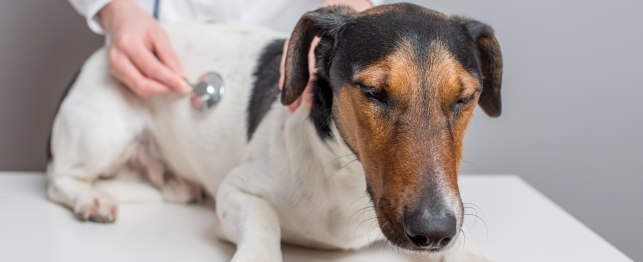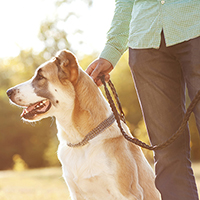Prostate tumor or growth is responsible for more cases of prostate gland problems in dogs. Continue reading this article to find out more about this condition.
The symptoms of Dog Prostate cancer includes the following:
1. The dog may have fever and a lack of appetite
2. The urine will have a pink tinge to it and it may have blood in it as well
3. The dog will usually pass urine in short intermittent spurts.
4. The dog will have stiff back legs and may take shorter strides
5. The dog may walk with an arched back.
The most common cause of prostate problems in dogs is a prostatic tumor and other conditions having similar symptoms are highly unlikely.
The prostate gland is found inside the urethra it is an almost spherical gland and is relatively small. It produces fluids to carry and feed sperm during the dogs mating process.
A prostatic tumor will result in inflammation of the prostate gland and as it continues to grow it will push against the wall of the urethra thus making it very painful for the dog to urinate.
If you suspect that your dog has prostate cancer you should consult your vet as soon as possible because it will continue to inflict pain onto your dog and will have to be removed in order to make sure that the dog returns to normal health.
In order to confirm whether the dog has prostate cancer or not the vet will take X-rays, conduct ultrasound scans and may even pass a camera into the affected area of the dog.
Once confirmed, the tumor will have to be removed as soon as possible through surgery but before the vet goes ahead and performs it they may want to confirm whether or not the cancerous tumor had spread to other parts of the body. This will be done by same methods as were used to check for the tumor in the first place. These include x-rays, ultrasound scans and passing a camera through the affected areas.
Complications arise depending on how long the tumor has been growing for. It may be impossible to remove the tumor safely if it has grown excessively and is near organs or vital body parts.
Most vets will still try to remove the tumor first and then use chemotherapy and radiation to remove the remaining cancerous cells. A histopathologist will decide the type of therapy depending on the samples given to them.

 Warning! Water Hemlock Kills Dog in an Hour
A 3-year-old Border Collie mix rece
Warning! Water Hemlock Kills Dog in an Hour
A 3-year-old Border Collie mix rece
 The Dumbest Things Dog Owners Do
The Dumbest Things Dog Owners Do
The Dumbest Things Dog Owners Do
The Dumbest Things Dog Owners Do
 The Skinny on Dog Skin Conditions
The Skinny on Dog Skin Conditions
The Skinny on Dog Skin Conditions
The Skinny on Dog Skin Conditions
 Can Dogs Eat Strawberries
Warm weather means that fresh fruit
Can Dogs Eat Strawberries
Warm weather means that fresh fruit
 The Glamorous Shih Tzu Coat, From Top Knot to Tail
When seen floating across the show
The Glamorous Shih Tzu Coat, From Top Knot to Tail
When seen floating across the show